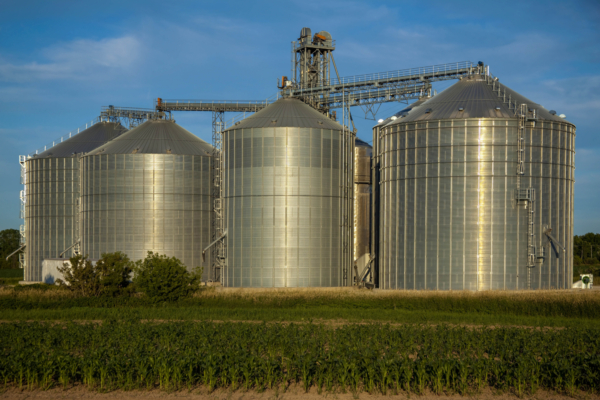After a grain storage facility is emptied of a commodity, steps need to be taken to remove any residual grain and dust. Insects, molds, and fungi can survive on a relatively small quantity of old grain and contaminate the newly harvested crop after it is put into storage. For some insects, it takes only a few kernels to maintain a population until the next harvest.
With the 2021 harvest season closing in, now is the time to make changes and repairs and perform maintenance on equipment for handling this fall’s crop. While no single activity is solely responsible for storing and marketing a quality crop and providing safety for workers, maintenance and repairs to grain handling equipment is close to the top of the list of important tasks.
If maintenance and repairs are left undone, catastrophic consequences can include fire, explosions, facility damage, crop damage, and even loss of human life.
Cleaning
The importance of cleaning out old grain is well-known, but it’s more than just sweeping out an empty bin. Augers, trucks, pits, bucket elevators, and areas around belts are overlooked often. Conveyors, in particular, are known to be the most common cause of fires and explosions in grain handling facilities.
Cleaning is important all year long, but when the facility is at its lowest storage inventory prior to harvest, it’s a good time to get to the often hard-to-access areas. Simple use of brooms, dustpans, and explosion-proof vacuums can eliminate significant risks.
Be sure to refer to facility or company housekeeping procedures and document and date cleaning activities. Good recordkeeping enables good benchmarks and motivators to keep all equipment and work areas clean. Not only is this a good management practice, it is required of commercial facilities per Occupational Safety and Health Administration (OSHA) standard 1910.272(j).
If housekeeping procedures do not exist for a facility, contact online resources such as the National Grain and Feed Association (NGFA/ngfa.org/safety) and the Grain Elevator and Processing Society (GEAPS/geaps.com/resources/knowledge-resource-center) for examples. Contractors also are available to assist in establishing housekeeping records and procedures.
Inspecting
Just as it’s easier to clean around the facility in the offseason, it’s also easier and safer to inspect the condition of all handling equipment at the same time.
Pay particular attention to bearings and wiring. Worn bearings cause heat, which can lead to fires, and can cause complete failure of any moving parts. The failure of any piece of handling equipment can be a huge problem during harvest.
Bucket elevator bearings are notorious for being hard to service and replace, and they also are known to be the cause of many catastrophic events. A scheduled maintenance and replacement plan for all bearings in handling equipment should be in place and kept current.
One day of downtime during harvest is an economic disaster if a bearing seizes, not to mention shutting down the facility if fire is discovered in any part of the facility.
Inspecting bearing temperature sensors and wear sensors on belts also is essential. These sensors can be non-functional without showing signs of a problem, depending on the electronic system in the facility. Like having a smoke alarm in a home with a bad battery, bearing and belt sensors can give that same false sense of security, if they are not inspected and tested regularly.
Preseason Reminders
- If it moves or rotates, check it now.
- If it generates or encounters dust, check it now.
- If it touches grain, check it now.
- Keep record of all inspections.
- Install new equipment, and keep record of replaced parts and equipment.
- Train all employees, including new seasonal employees, for safety procedures and policies.
Replacing and Upgrading Equipment
If a facility has plans for drag, c belt, or auger replacement, now is an optimal time to make those changes. Upgrading to zero-entry bin sweeps has been considered a boost for a safer working environment. Checking sump grating conditions, electrical wiring and controls, conditions, and all guarding and safety equipment, is extremely important, as well.
Keep record of inspections and any changes made to equipment so that management can make decisions on timely replacement and future maintenance.
Aeration systems and grain drying equipment must be inspected at least annually to ensure operation when new grain comes into the facility. High demand during harvest puts a heavy load on these systems, and downtime is very costly.
Consult instruction and maintenance manuals on equipment or contact equipment contractors for inspection checks. This equipment can be overlooked easily because “it worked great the last time we used it!” Time and weather are not the friends of this equipment.
Safety Equipment and Training
Often, new and seasonal workers are brought in for harvest. Employees must be trained in safety procedures and facility policies, regardless whether they are seasonal workers or permanent employees. Be sure to document closely the training of these employees, as well as the content presented during the training. Keep these records for at least three years in case of an OSHA inspection or an emergency. Resources for this training are available through NGFA and GEAPS, as well as many safety consultants and equipment companies.
Online Resources
• GEAPS knowledge resource center: geaps.com/resources/knowledge-resource-center.
• NGFA safety and education topics: ngfa.org/safety.
• “Preparing Grain Bins and Flat Storages for Harvest,” BAE-1112. extension.okstate.edu/fact-sheets/preparing-grain-bins-and-flat-storages-prior-to-harvest-or-incoming-product-storage.html.
• “Preparing for Harvest and Grain Storage,” cropwatch.unl.edu/2018/preparing-harvest-grain-storage.
Dr. Carol Jones, Ph.D., PE, is a professor emeritus at Oklahoma State University, Stillwater, and president and lead engineer at CL Jones Consulting, LLC.
- From the July/August 2021 GRAIN JOURNAL


